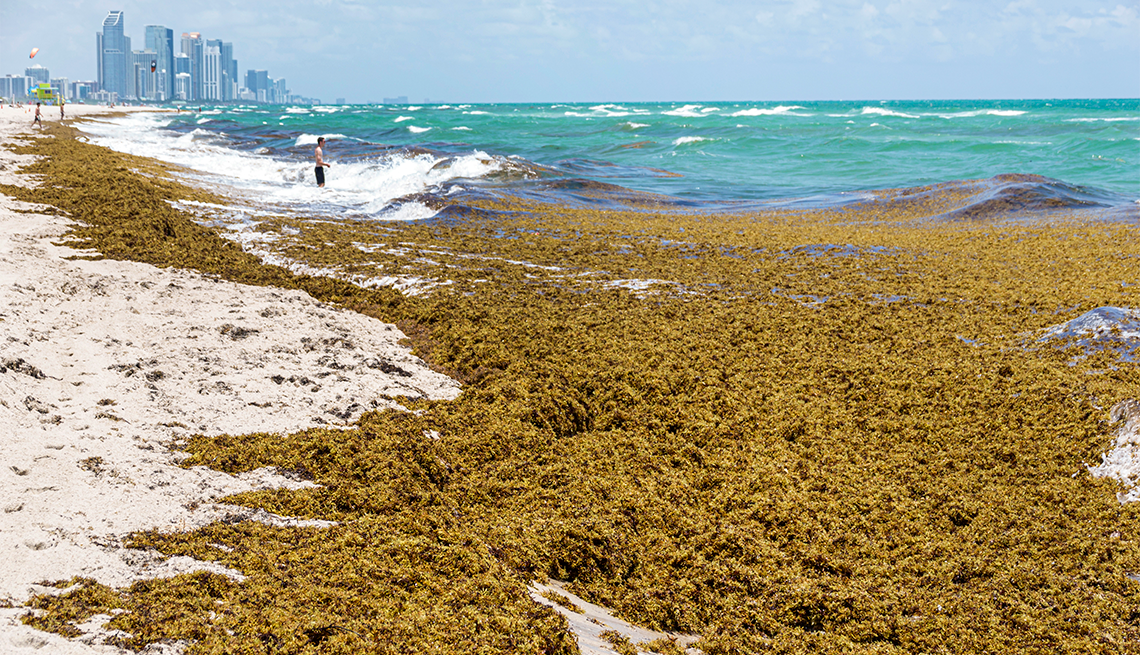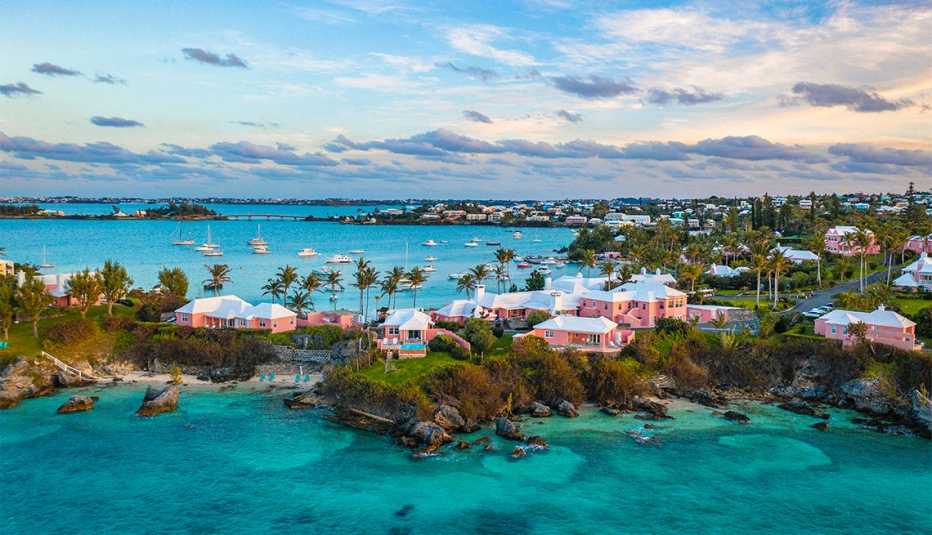AARP Hearing Center
Red tide, hurricanes, spring breakers: These aren’t the only factors beyond your control that can impact your vacation plans in Florida and the Caribbean.
For the last few months, the talk has been all about Sargassum, also referred to as the seaweed blob, the floating algae that’s washed ashore in places such as the Florida Keys, Barbados and Cancun, Mexico. The rotting, stinking algae leaves less than postcard-perfect views atop beaches that usually have no trouble getting by on their looks.
With the current Sargassum bloom in the Gulf of Mexico predicted to peak from June to July, you might be wondering what to expect if you have vacation plans in Florida or the Caribbean.
AARP reached out to experts for the latest information on the Sargassum, where its effects are most likely to be felt ashore and potential health complications related to the rotting seaweed.
What is Sargassum?
Sargassum is a genus of naturally occurring algae or seaweed that exists in hundreds of species.
“In the Atlantic Ocean and Gulf of Mexico, the dominant species are Sargassum fluitans and Sargassum natans,” says Chuanmin Hu, professor of optical oceanography at the University of South Florida. “Both are yellowish-brownish seaweed that are pelagic, meaning they live in surface waters and are not attached to ocean substrates,” such as sand or coral reef.
Sargassum has gas-filled structures called pneumatocysts that look like little berries and help to keep it afloat. “Once it dies, it sinks to the ocean floor,” Hu says. “But before it dies it can be washed ashore by wind, tides and ocean circulation, and this is what people are worried about.”
At sea, Sargassum provides an important habitat for juvenile fish and unique creatures that have evolved to live there, including perfectly camouflaged Sargassum frogfish, says Tracy Mincer, assistant professor of biology/biogeochemistry at the Florida Atlantic University (FAU) Harbor Branch Oceanographic Institute.
And while much clickbait has been made about the size of the Great Atlantic Sargassum Belt — the 5,000-mile-long, 300-mile-wide area of ocean with patches of Sargassum scattered from the coast of West Africa to the Gulf of Mexico — it’s important to note that it’s not a solid mass of continuous seaweed making its way toward our shores, Hu says.
“Remember, the Atlantic Ocean is huge. Within the Great Atlantic Sargassum Belt, you don’t find Sargassum everywhere. It’s scattered in patches,” he says, likening its density to the visual of ground pepper spilled across a table, heavier in some parts and only lightly sprinkled or absent in others.



































































